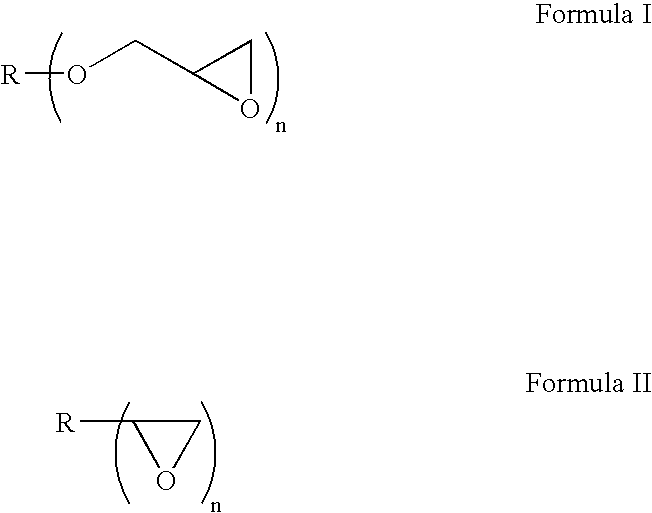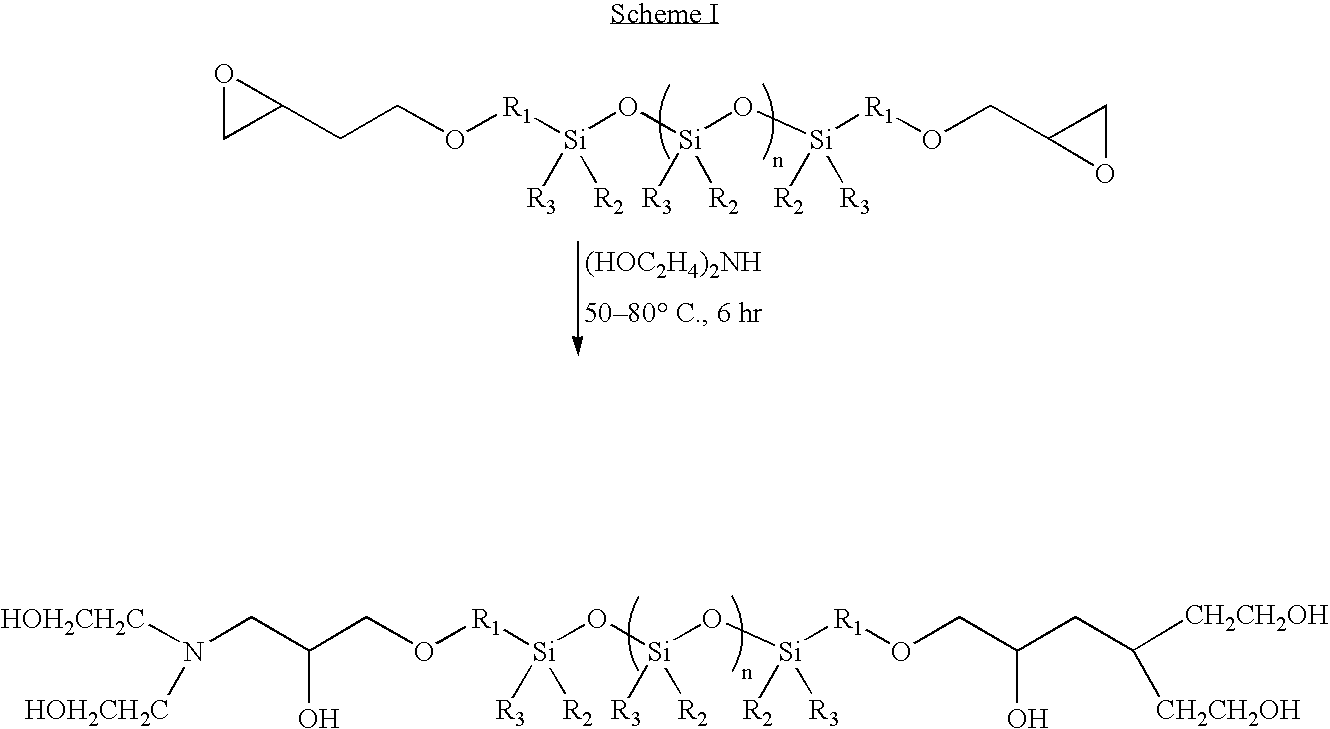Acquisition fiber in sheet form with low degree of yellowing and low odor
- Summary
- Abstract
- Description
- Claims
- Application Information
AI Technical Summary
Benefits of technology
Problems solved by technology
Method used
Image
Examples
example 1
[0101] This example illustrates a representative method for making a treatment composition solution and using the solution in making acquisition fiber in sheet form.
[0102] Cyclohexanedimethanol diglycidyl ether (6.25 g) was added to an aqueous solution of citric acid (35.0 g, 50% in water). The produced suspension mixture was stirred at room temperature. After about 30 minutes, an exothermic reaction started and the stirring was continued until a slightly viscous, water white solution was produced (about 30 minutes). The solution was stirred for at least another 6 hours, and then it was diluted with distilled water to adjust the weight of the solution to about 400 grams. The pH was then adjusted to about 2.9 to 3.3 with an aqueous solution of NaOH (3.5 g, 50 weight %). After stirring for a few minutes, sodium hypophosphite (6.0 g, 50% by weight in water) was added. The stirring was continued for few more minutes after which a white water solution was produced. More water was added ...
example 2
[0104] This example illustrates another method for making a treatment composition solution and using the solution in making acquisition fiber in sheet form.
[0105] In this example, the procedure described in Example 1 was followed, except that no adjustment was made to the pH of the treatment composition solution, so that the pH of the solution was about 1.94. In addition, sodium hydrogen phosphate monobasic (NaH2PO4) was used as a catalyst. Hand sheets were treated to form acquisition fiber samples. Absorbent properties and fiber quality of the produced acquisition fibers were then evaluated, the results of which are summarized in Tables 1 and 2, below.
example 3
[0106] This example illustrates a representative method for making acidic acquisition fiber (acquisition fiber with low pH).
[0107] In this example, the procedure described in Example 2 was followed except that no catalyst was added to the treatment composition solution. Hand sheets were treated to form acquisition fiber samples. Absorbent properties and fiber quality of the produced acquisition fibers were then evaluated, the results of which are summarized in Tables 1 and 2, below.
TABLE 1Absorbent properties of acquisition fiber prepared usingtreatment compositions of Examples 1, 2 and 3AbsorbencyAbsorbentCentrifugeUnder LoadCapacityRetentionAcquisition fiber(g / g OD)(g / g OD)(g / g OD)Control110.311.40.93Example 19.211.20.58Example 29.211.10.57Example 310.212.00.60
1Untreated Rayfloc ®-JLD
[0108]
TABLE 2Fiber quality of acquisition fibersprepared using treatment compositions of Examples 1, 2 and 3Knots and nitsFinesISOAcquisition fiber(%)(%)BrightnessControl19.94.7387.0Example 116.35...
PUM
| Property | Measurement | Unit |
|---|---|---|
| Temperature | aaaaa | aaaaa |
| Temperature | aaaaa | aaaaa |
| Temperature | aaaaa | aaaaa |
Abstract
Description
Claims
Application Information
 Login to View More
Login to View More - R&D
- Intellectual Property
- Life Sciences
- Materials
- Tech Scout
- Unparalleled Data Quality
- Higher Quality Content
- 60% Fewer Hallucinations
Browse by: Latest US Patents, China's latest patents, Technical Efficacy Thesaurus, Application Domain, Technology Topic, Popular Technical Reports.
© 2025 PatSnap. All rights reserved.Legal|Privacy policy|Modern Slavery Act Transparency Statement|Sitemap|About US| Contact US: help@patsnap.com



